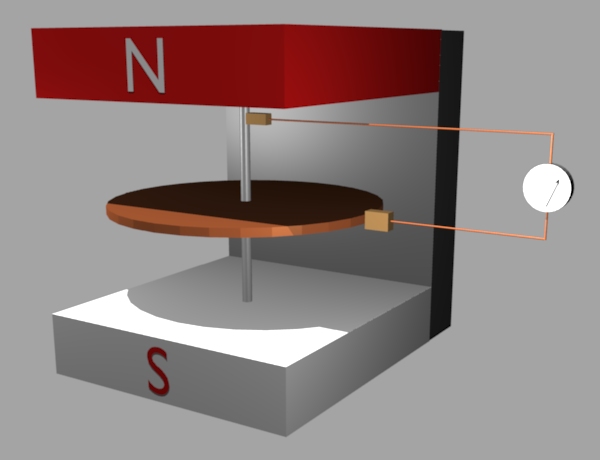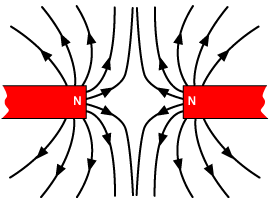Hi Guys,
When reading https://en.wikipedia.org/wiki/Homopolar_generator one is told that:
“If the magnetic field is provided by a permanent magnet, the generator works regardless of whether the magnet is fixed to the stator or rotates with the disc.”
Ok, hold on now... This is like saying a bicycle dynamo works regardless of whether it is connected to the frame or the wheel itself. Crazy right? The wikipedia article does not go into further detail of course.
What we know is that a current I flowing though a wire in the presence of a magnet with magnetic field B will cause a Lorentz force on the wire and an equal and opposite force on the magnet itself.
Also we know that a moving wire in the presence of a magnet with magnetic field B will cause a Lorentz force on the electrons in the wire and thus an electromotive force with an equal and opposite force on the magnet itself.
So what does that mean for the Homopolar Generator? By the rotating motion of the disc an electromotive force will be induced upon the electrons in the disc and once a current flows by closing the loop a Lorentz force will act upon the disc and the magnet. In case where the magnet is stationary it will slow down the disc. In case where the magnet is rotating with the disc a torque will be created between the disc and the magnet which will cancel itself out.
Can it be that simple? I believe so. We just have been distracted by so much BS that we have simply overlooked this simple way of getting free energy.
Now there is a small catch to this. The original generator produces very low voltage and very high current, making it quite difficult to get the energy off the disc into a stationary frame. It's like trying to make a transformer work with just one loop of wire on the primary.
This is where I had an idea. Why not use a coil instead of a disc? Like this:
[See Picture]
By using opposing fields on the left and right side the electromotive forces will add up instead of cancel out.
This should give twice the voltage per coil loop compared to a traditional generator with a single disc.
What do you think?
Max
When reading https://en.wikipedia.org/wiki/Homopolar_generator one is told that:
“If the magnetic field is provided by a permanent magnet, the generator works regardless of whether the magnet is fixed to the stator or rotates with the disc.”
Ok, hold on now... This is like saying a bicycle dynamo works regardless of whether it is connected to the frame or the wheel itself. Crazy right? The wikipedia article does not go into further detail of course.
What we know is that a current I flowing though a wire in the presence of a magnet with magnetic field B will cause a Lorentz force on the wire and an equal and opposite force on the magnet itself.
Also we know that a moving wire in the presence of a magnet with magnetic field B will cause a Lorentz force on the electrons in the wire and thus an electromotive force with an equal and opposite force on the magnet itself.
So what does that mean for the Homopolar Generator? By the rotating motion of the disc an electromotive force will be induced upon the electrons in the disc and once a current flows by closing the loop a Lorentz force will act upon the disc and the magnet. In case where the magnet is stationary it will slow down the disc. In case where the magnet is rotating with the disc a torque will be created between the disc and the magnet which will cancel itself out.
Can it be that simple? I believe so. We just have been distracted by so much BS that we have simply overlooked this simple way of getting free energy.
Now there is a small catch to this. The original generator produces very low voltage and very high current, making it quite difficult to get the energy off the disc into a stationary frame. It's like trying to make a transformer work with just one loop of wire on the primary.
This is where I had an idea. Why not use a coil instead of a disc? Like this:
[See Picture]
By using opposing fields on the left and right side the electromotive forces will add up instead of cancel out.
This should give twice the voltage per coil loop compared to a traditional generator with a single disc.
What do you think?
Max

















Comment